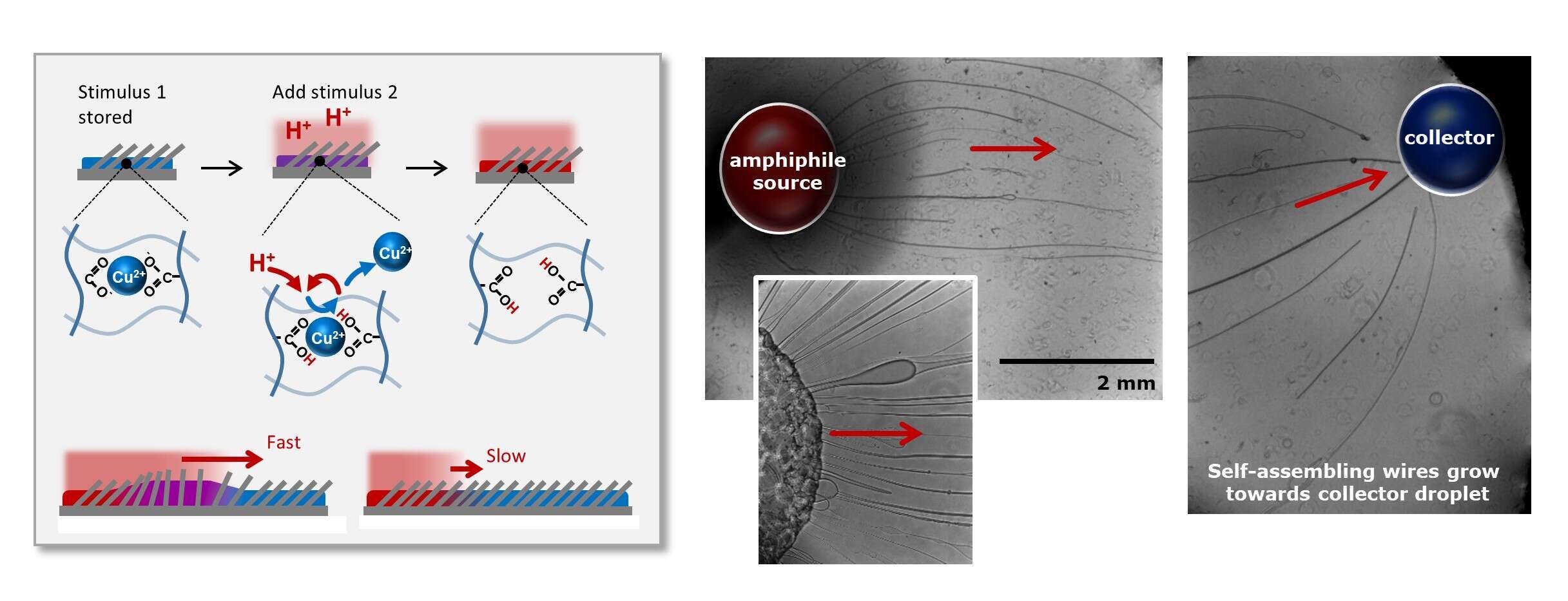
Non-equilibrium Signal Storage and Transmission in life-like Hydrogel Systems
2SEAS, Harvard University, Cambridge, USA
The responsive swelling and contraction of hydrogels offers an attractive strategy to translate environmental stimuli into mechanical action – providing applications in e.g. sensing, drug delivery and smart materials. Typically, hydrogels simply equilibrate to applied stimuli (pH, temperature), in contrast to living organisms that possess an enormous diversity of mechanisms to selectively sense environmental information and process this into appropriate behavior.
We demonstrate strategies that enable non-equilibrium stimulus processing in adaptive hydrogel systems. Via unique combinations of chemical complexation, diffusion and osmosis, we enable these hydrogels to selectively respond to fast, or slow, stimuli – functionalities that are inaccessible to traditional hydrogels that continuously equilibrate to their environment.
Secondly, we are developing a chemotaxis system driven by amphiphile molecules assembling into one-dimensional filaments that progress as communicating “wires” over centimeter-long distances along aqueous interfaces. The directional growth of these wires, controlled by hydrogel assembly and chemical reactions as feedback mechanisms, will open new pathways for autonomous communication along synthetic, smart materials.

Powered by Eventact EMS